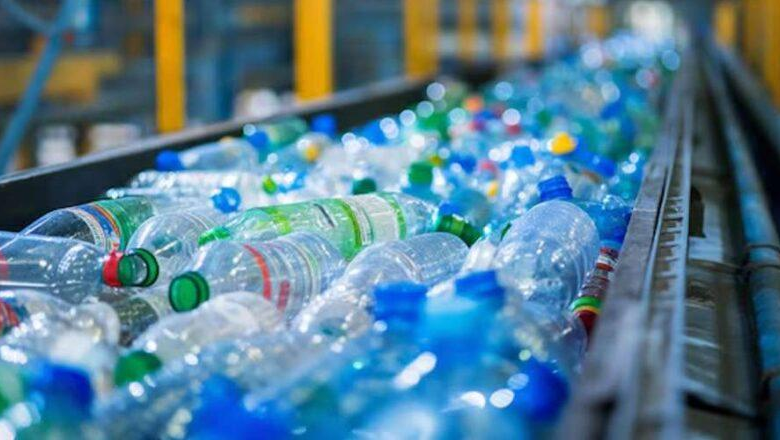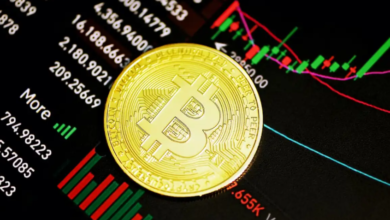Plastic Recycling: Turning Waste into a Sustainable Future

Plastic is all around us in the houses where we live, the office spaces where we commute daily, the cars we drive daily, and even the food we eat. Despite revolutionizing modern-day life, plastic has become one of the biggest environmental issues in our modern times. We create over 400 million tons of plastic waste globally each and every year and recycle very little of it. What if we recycle the waste plastic and make it valuable again and again?
Welcome to the world of plastics recycling where innovation meets sustainability.
What is Plastic Recycling?
Plastic recycling is the reusing and reprocessing of scrap or waste plastics to create usable items. It not only prevents plastics from accumulating in landfills and oceans but reduces the necessity to manufacture new plastics and conserves energy and fossil fuels.
But plastics recycling is not quite so easy as it seems. Unlike metal or glass, plastics consist of many types with different properties. Recycling plastics hence involves complex sorting, cleaning, and processing steps.
According to Wikipedia in 2015, only 9% of the plastics waste in the world was recycled, 12% was incinerated, and the last 79% was dumped in the landfills or into the environment to contaminate it. That statistic indicates just how much we have to embrace and expand proper recycling programs.
How the Recycling Process Works
The plastics recycling process commonly involves:
- Sorting and Collection: The plastics are sorted according to type (PET, HDPE, LDPE, etc.) and color. It is an important step because the blending of incompatible plastics will lower the quality of the recycled material.
- Cleaning: Cleaning follows sorting and is done to remove dirt, food particles, and other impurities from the plastic. Clean plastic is needed in order to create high quality recycled products.
- Shredding and Melting: The plastics are shredded into flakes and melted. Depending on the type of material, it is pelletized for use or shaped into new products directly.
- Re-Manufacturing: The pellets from recycling are used to manufacture new items such as containers, clothing, car parts, and construction material.
However, the process is not perfect. Most plastics are not very recyclable since they degrade with every use and recycling cycle. Thus, now there is added pressure on the technology for chemical recycling to depolymerize the plastics into the original monomers so there is genuine closed-loop recycling.
Challenges in Plastic Recycling
Despite its benefits, the recycling industry faces numerous challenges:
- Diversity in Material Types: There are seven types of plastics and each should be treated differently during the recycling process. The majority of the products are made up of mixed material and are not simple to recycle.
- Contamination: Non-recyclable plastics, food residue, and packaging have the possibility to contaminate batches and lead to downcycling or rejections.
- Economy: Recycled plastics are less expensive to produce than new plastics and therefore less economically feasible without mandates or subsidies.
- Infrastructure Gaps: There is no infrastructure in most developing countries to manage plastic waste properly, and it results in landfilling or open burning.
- Consumer Misconceptions: Misconceptions about the materials that can and cannot be recycled generate low participation in recycling programs.
Innovating the Way: Banyan Nation
The largest consumer of plastics globally, India is now also a global leader in sustainable plastic recycling solutions. A prime example is Banyan Nation, one of the most reputed plastic recyclers in the country.
Banyan Nation is pioneering the production of high-grade Recycled Polyethylene (rPE) and Recycled Polypropylene (rPP). The products meet global standards and are safe for use in packaging applications like food-grade and personal care products.
In what ways is Banyan Nation different?
- Technology-Driven Recycling: Their in-house proprietary technology for cleaning and processing plastics strips away the label, odor, and chemical residue and generates resins comparable to virgin plastics.
- Inclusive Supply Chain: The firm has onboarded thousands of informal waste collectors into the supply chain with the aim to achieve social impact and material traceability.
- Brand Partnerships: Banyan Nation helped big brands like Hindustan Unilever and Shell make the switch to recycled plastics and produced over 1.5 billion plastic bottles with 100 percent responsibly recycled and traceable content.
This technique not just accelerates the recycling but encourages a circular economy where the plastic gets recycled and not wasted.
Read Also: Business for Sale: How Business Brokers Simplify the Buying and Selling Process
A Booming Market: The World Outlook
The worldwide plastics recycling market was worth USD 46.8 billion and is expected to expand to USD 101.6 billion in 2034 with a compound annual growth rate (CAGR) of 8.1%, the report for the year 2024 released by a leading press release agency says.
What is fueling it?
- Regulations by the government: Regulations from the government mandating recycled content in packaging and prohibiting the use of single-use plastics are forcing companies to recycle.
- Consumer demand: Consumers are increasingly demanding brands to be greener.
- Technological innovation: AI-based sorting, chemical recycling, and automation are enhancing the efficiency and profitability of recycling.
- Corporate Social Responsibility: The push for Environmental, Social and Governance (ESG) initiatives is prompting companies to include recycled content within supply chains.
The Road Ahead: What Can You Do?
You don’t have to be a CEO or a rocket scientist in order to help recycle plastics. Here’s how:
- Reduce First: Use reusables bags, bottles, and containers. Avoid single-use plastics whenever possible.
- Recycling Correctly: Learn which plastics are accepted in your local recycling program. Rinse and clean containers before recycling.
- Be an Advocate for Recycled Products: Support market demand with the use of products composed of recycled plastics.
- Promote and Educate: Educate and encourage the residents in the community on the importance and value of recycling.
Endnote
Plastic recycling is no longer a choice—it’s a necessity. In the midst of the increasing environmental issues, the recycling of plastics into a commodity is a promising solution for the future. With companies like Banyan Nation taking the lead and the global community increasingly devoted to sustainability, recycling plastics is likely to be part of the solution in shaping a greener and cleaner tomorrow.
The next time you dispose of a plastic bottle in the recycling bin, recall: it’s not trash—it’s on the way to be reborn.





